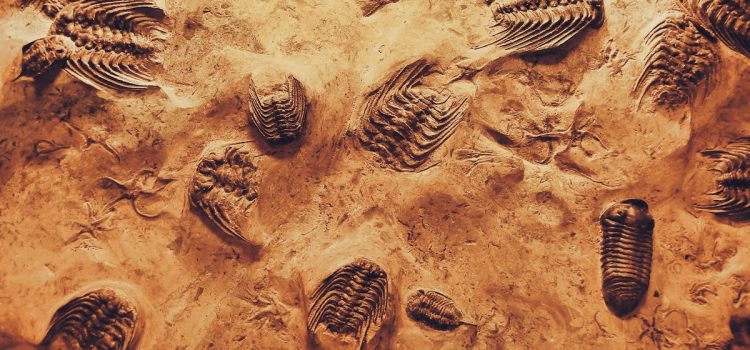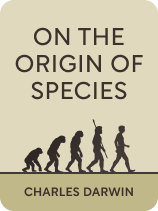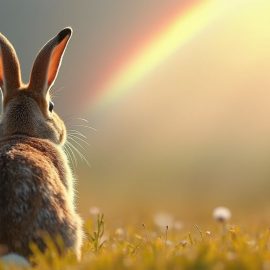

This article is an excerpt from the Shortform book guide to "On the Origin of Species" by Charles Darwin. Shortform has the world's best summaries and analyses of books you should be reading.
Like this article? Sign up for a free trial here.
Why are domestically-grown berries larger than wild berries? Why are lemurs only in Madagascar? Is there evidence of transitional species?
Charles Darwin’s theory of evolution maintains that our current species descended from older, less developed species. According to Darwin, common descent is evidenced by changes in domesticated species, leftover characteristics, intermediate species found in the fossil record, and the role of natural barriers.
Read more to learn why Darwin believes that species have descended from earlier species.
Charles Darwin on Common Descent
According to Darwin, common descent as a theory rests on four kinds of evidence. Let’s take a close look at each type.
Evidence Type 1) Changes in Domesticated Species
To support his argument that species change over time, Darwin highlights the ways humans have changed domesticated plants and animals through selective breeding. He observes that many domesticated organisms have become highly specialized to provide more value to humans. For example, domesticated strains of berry vines grow much larger fruits than their wild counterparts. This occurs because humans select for these desirable traits when breeding domesticated species. Based on this evidence, Darwin concludes that trait selection has the power to gradually change the characteristics of a species.
(Shortform note: Researchers have tried to understand what happens in the evolution of domesticated animals that return to the wild. Do feral organisms simply revert to their earlier forms in a kind of “reverse evolution”? Or do they retain characteristics selected for by humans? Some research reveals that they keep evolving from their domesticated forms, but they evolve in new directions as they face different pressures of selection in the wild. Studies of feral chickens in Hawaii reveal they’re distinct from both domesticated and wild chickens—the feral chickens are a new kind of hybrid with a mix of domesticated and wild characteristics. This supports Darwin’s broader view that organisms are shaped by their entire histories of selection, regardless of the conditions for selection.)
Evidence Type 2) Leftover Characteristics
Darwin explains that organisms have taken on multiple forms over the course of their evolution. He argues that we can find evidence for this by looking at structures that have been modified from earlier forms. He identifies two types: vestigial characteristics and repurposed characteristics.
Vestigial characteristics are features that served a purpose in earlier versions of a species but are slowly disappearing due to disuse. For example, some species of blind cavefish still have eyes, even though they no longer work, and whales have pelvises and femurs even though they have no legs. These characteristics suggest that their ancestors once used these features. Darwin argues that these characteristics wouldn’t exist unless species had evolved from older species.
Repurposed characteristics are features that evolved to serve one purpose and then became adapted to a second. For example, many insects communicate by rubbing their legs or wings together to make noise. These body parts likely evolved for movement before the insects started using them for communication. The fact that some body parts have taken on secondary purposes suggests that they evolved to fulfill one need and were then adapted for another, supporting the view that organisms developed in stages.
(Shortform note: Researchers have found that organisms retain characteristics from previous versions due to a tendency toward “irreversibility.” Once an organism has evolved a structure or characteristic, it can’t simply revert back to earlier forms. This principle—named Dollo’s law of irreversibility—was first put forward in 1890. Research has revealed some exceptions to Dollo’s law: Lizards have lost and regained toes, insects have lost and regained wings, and bacteria have gained and lost resistance to antibiotic compounds. However, these exceptions are extremely rare. In general, researchers have found that the more complex an organic structure is, the harder it becomes to “un-evolve.”)
Evidence Type 3) Intermediate Species in the Fossil Record
Darwin asserts that the fossil record provides examples of transitional species. These ancient ancestors provide links that show one species transitioning into another.
For example, biologists believe that birds evolved from reptiles because fossil evidence shows hollow-boned dinosaurs like Coelophysis, which were likely ancestors to modern birds. Biologists also believe that whales descended from land-dwelling mammals because there are fossils of transitional species like Ambulocetus, a whale-like mammal with webbed feet that could still walk on land.
(Shortform note: Paleontologists caution that transitional fossils can provide us with only a rough outline of evolutionary development—they don’t necessarily prove direct ancestry from any one particular species. This is because transitional fossils may represent members of a larger family of organisms, some of which became the ancestors of modern species and some of which died out. For example, the Archeopteryx is a prehistoric animal that shares characteristics of both birds and reptiles, supporting the view that birds evolved from reptiles. However, we don’t know whether birds evolved from Archaeopteryx or from a relative that hasn’t been preserved through fossilization.)
Evidence Type 4) The Role of Natural Barriers
Darwin also argues for the descent of species by highlighting the role of natural barriers in shaping populations and ecosystems. He points out that species look very different from each other on opposite sides of natural barriers like oceans and mountain ranges. Darwin explains that this occurs because natural barriers isolate breeding populations from each other: Organisms that live on either side of a natural barrier evolve to become distinct from each other because they no longer interbreed.
For example, lemurs—a long-tailed, tree-dwelling primate—diverged from other early primates over 60 million years ago by becoming isolated on the island of Madagascar. The natural barrier of water between Madagascar and the African mainland allowed lemurs to evolve separately from the ancestors of modern monkeys.
| What Evolution Teaches Us About Ancient Geography Biologists have discovered that the pattern of organisms evolving in areas with natural barriers is consistent enough to teach us about barriers that existed in the ancient past. One of the most famous examples of wildlife emerging on opposite sides of a natural barrier is found in the Wallace Line. Recall that Alfred Wallace was a contemporary of Darwin who independently came up with a similar theory of evolution. He discovered an invisible line running through the Malay Archipelago: All of the flora and fauna on one side of the line consisted of Asian species and their descendants, while the organisms on the other side were all Australian species and their descendants. Scientists have since discovered that this boundary was caused by plate tectonics. The islands on each side of Wallace’s line had been connected to the ancient continents of Sunda and Sahul, which were slowly pushed together to form the Malay Archipelago. |

———End of Preview———
Like what you just read? Read the rest of the world's best book summary and analysis of Charles Darwin's "On the Origin of Species" at Shortform.
Here's what you'll find in our full On the Origin of Species summary:
- Charles Darwin's theory of evolution that changed how we look at life on Earth
- The objections raised against Darwin's theory and Darwin's rebuttals
- Updates on Darwin's theories from contemporary biology






